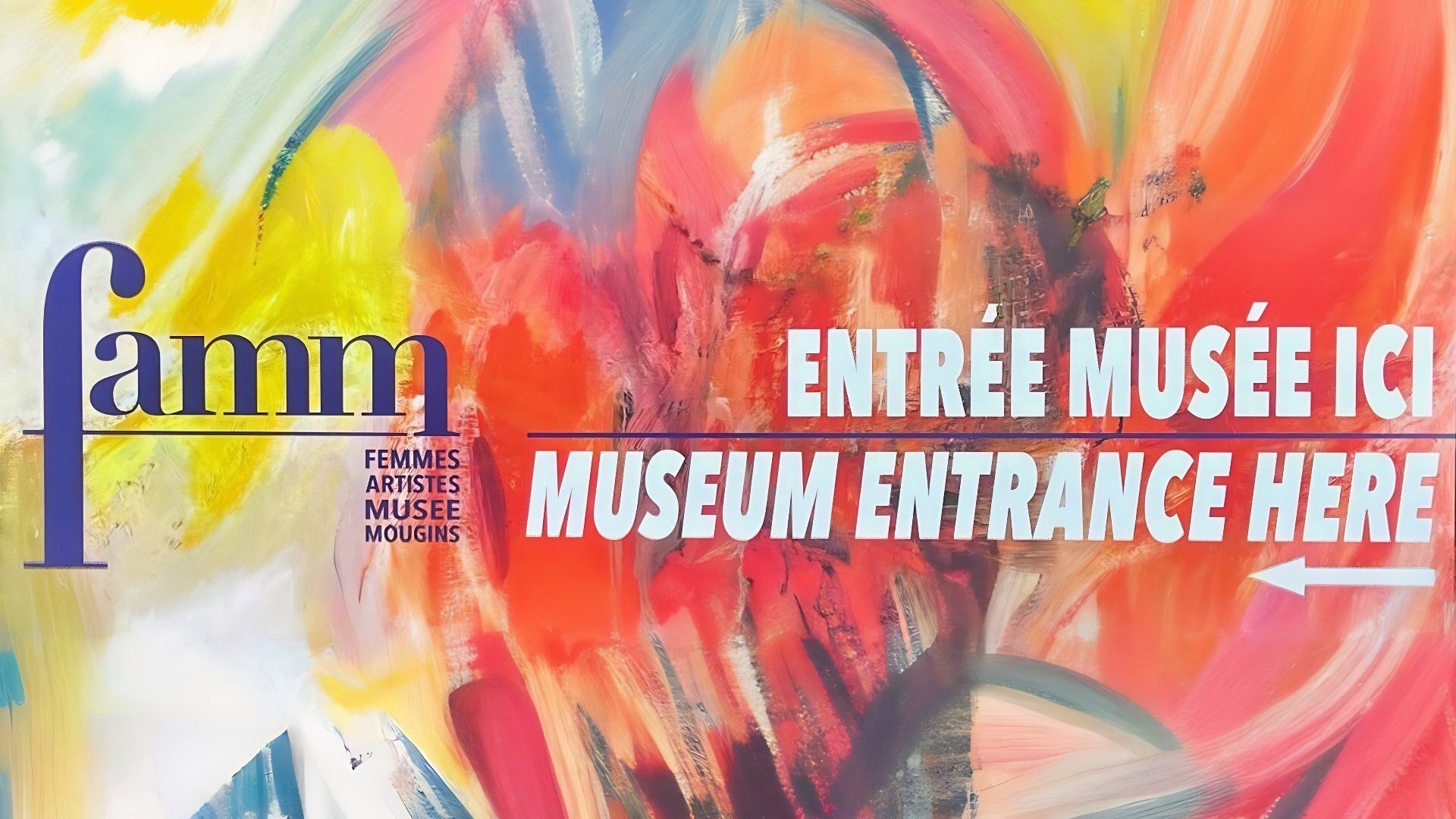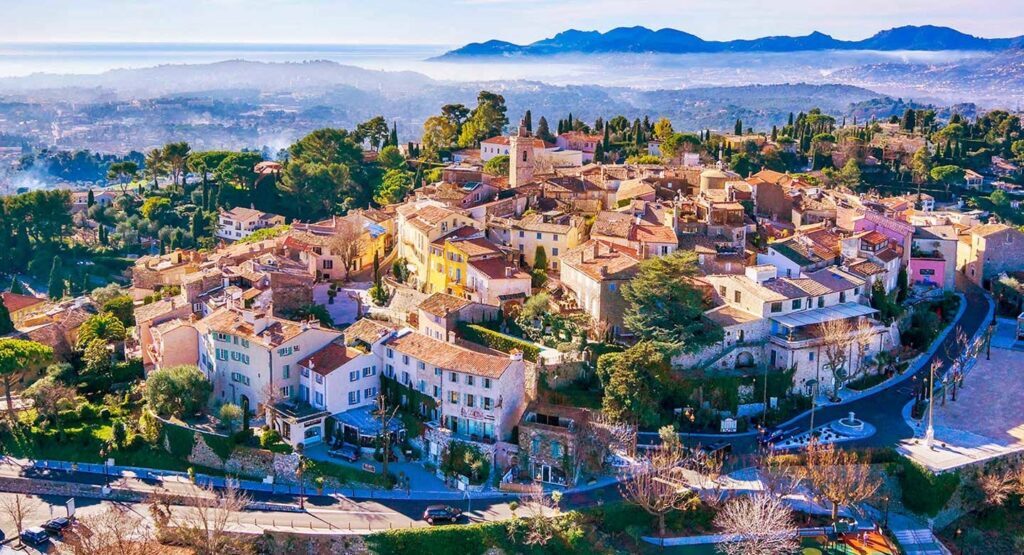
Experiences in Mougins
Things to experience in Mougins Village
With its narrow streets, stone-paved passages and a fantastic view of the Côte d'Azur, Mougins Village is an oasis of peace and beauty. Here, visitors can enjoy a rich history, beautiful surroundings and a world-class gastronomic scene.
Mougins is particularly renowned for its artistic heritage, and the town has over the years attracted many well-known artists, including the world-famous Pablo Picasso.
Picasso lived in Mougins in the last years of his life, and his presence has had a lasting impact on the city's cultural life.
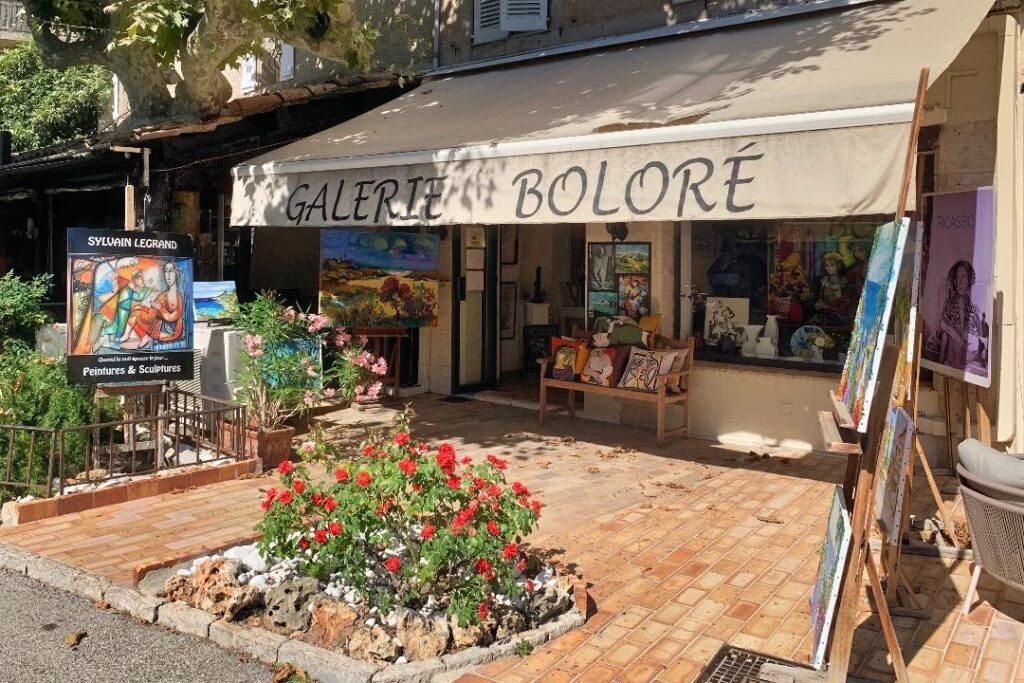
The narrow streets of Mougins Village are also home to many galleries and workshops where local artists exhibit and sell their work.
A walk through the village is like wandering through a living gallery, where every little shop and every corner reflects the creative spirit for which the city is known.
- The galleries
- Church of Saint-Jacques le Majeur
- Museum dedicated to female artists – FAMM
- Photographic Center
- La Sarrazine city gate
- Le Lavoir (the Wash-house)
- The tourist office
- Chapel of Notre-Dame de Vie (2 km outside the city)
- Chapel of Saint-Barthélémy (2 km outside the city)
- Royal Mougins Golf (6 km east of the city)
- Etang de Fontmerle Park (outside the city)
Watch the video from Mougins Village at the end of the page.
Mougins history
Mougins Village – A story through the ages
Mougins Village, located in the heart of Provence close to Cannes, has a rich and fascinating history that stretches back thousands of years.
The city was first inhabited in antiquity by the Ligurians, a pre-Roman population who settled in the area due to its strategic location on a hilltop.
Later, under Roman rule, Mougins developed into an important defensive post overlooking the Mediterranean coast.
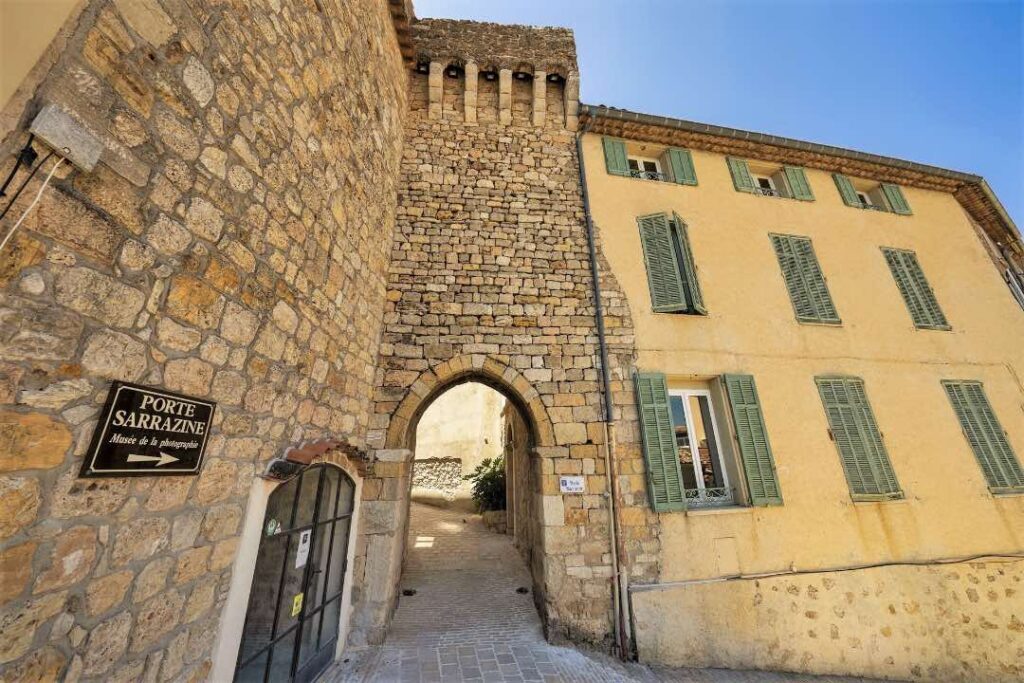
In the Middle Ages, Mougins grew around its fortifications, which protected the city from invasions. The round, fortified structure of the city can still be seen today with the narrow, winding streets leading up to the central square.
At this time, agriculture flourished, especially olive oil production, and Mougins became a small but agriculturally important village in the region.
In the 19th and early 20th centuries, Mougins remained a peaceful, rural town until artists began to discover its beauty and tranquility.
The most famous of these was Pablo Picasso, who moved to the city in 1961. His presence attracted an influx of artists, writers and intellectuals, transforming Mougins into an important center of creativity and art.
Today, Mougins is known for its artistic heritage, gourmet restaurants and well-preserved medieval charm, making it a popular destination for those seeking an authentic Provençal atmosphere with a historical twist.
Picassos Life in Mougins
Picasso's legacy
Pablo Picasso spent the last years of his life in Mougins, leaving a great mark on the city and its cultural heritage.
Picasso moved to Mougins in 1961, when he was 80 years old, with his second and last wife, Jacqueline Roque.
They settled in the large country house Mas Notre-Dame-de-Vie, located just outside Mougins Village and close to the Chapelle Notre-Dame de Vie. Picasso lived here until his death in 1973.
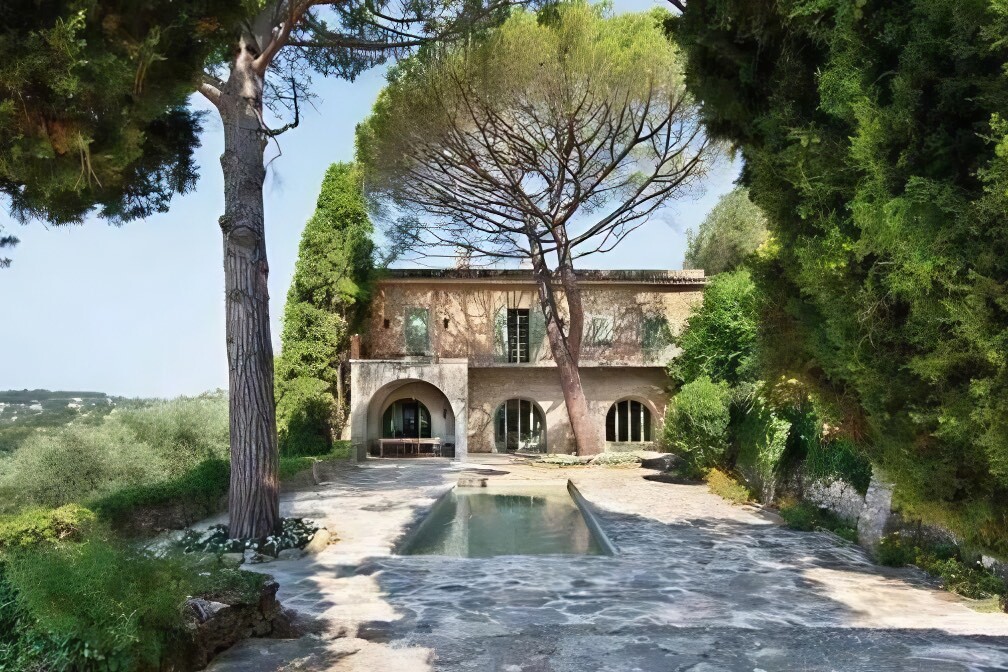
Picasso's Life in Mougins
In Mougins, Picasso found the tranquility that allowed him to focus on his art. He spent many of his days in the villa, painting, sculpting and working on ceramics. His home became a creative sanctuary where he could create some of his late works in peace and undisturbed.
While living in Mougins, his art often became more personal, reflecting his own feelings and thoughts about old age, love and the transience of life.
The villa also became a meeting point for Picasso's friends and family, and many famous artists, writers and intellectuals visited him here.
Among the guests were people like Joan Miró, Jean Cocteau and many others from the cultural elite. Mougins therefore became a center of artistic exchange, where Picasso could cultivate his friendships and continue to explore new creative expressions.
Picasso and Mougins' artistic scene
Picasso's presence in Mougins played a central role in establishing the city as an artistic center. His international fame attracted attention to this small Provencal village and many other artists began to settle in the area or exhibit their works here.
Mougins has since evolved into a place full of galleries, art studios and art festivals, and Picasso's legacy is still evident on the city's art scene today.
Although Picasso's villa is not open to the public, one can still feel his presence in the city. For example, you'll find several galleries exhibiting reproductions of his works, and the city's historical connection to Picasso is often mentioned in cultural events.
Picasso's death and legacy
Picasso died in Mougins on April 8, 1973 at the age of 91. He was buried in the nearby castle of Vauvenargues in Provence, which he had also owned. Even after his death, his spirit is present in Mougins, and the town is still revered as one of the last places where Picasso found peace and creativity.
The town's connection to Picasso is celebrated today through exhibitions and artistic events, and his time in Mougins is considered one of the most creative periods of his life, even though it was in his late years.
Visitors can still wander through the streets where Picasso walked and sense the artistic inspiration that made Mougins his home in the last years of his life.
Gastronomy
Mougins - The jewel of gastronomy in Provence
When you think of France, gastronomy is inevitably part of the picture. From delicate wines to refined cuisine, the country is a mecca for food lovers. A place that truly captures the essence of French gastronomy is Mougins.
With its unique location in the rolling hills near Cannes and a history rich in culinary heritage, Mougins has become a must-see destination for food enthusiasts from around the world.
A city rich in culinary traditions
Mougins has long been known as a gastronomic stronghold in the south of France. The city has attracted world-renowned chefs and foodies for decades and has a reputation for being home to some of the finest restaurants in the region.
Many of these restaurants are recognized with Michelin stars and offer creative interpretations of Provençal cuisine, where fresh, local ingredients take center stage.
Today's gastronomic tradition in Mougins started in the 1900s, and the legendary French chef Roger Vergé opened the iconic restaurant Le Moulin de Mougins in 1969.
Vergé was one of the pioneers of "Cuisine du Soleil" (Sunshine Cuisine), which emphasized simple but flavorful dishes made with sun-ripened vegetables, herbs and fresh Mediterranean fish.
His influence on the city's culinary scene remains an important part of Mougins' food culture today. Even though the restaurant now has new owners and goes by the name "Le Patio du Moulin de Mougins".
Gastronomy Festival
Mougins' love of food and the importance of gastronomy to the city reaches its peak during the annual Festival de la Gastronomie, also known as Les Étoiles de Mougins (The Stars of Mougins).
This festival attracts some of the most famous chefs from around the world and presents an impressive array of culinary presentations, workshops and tastings. The city's narrow, cobbled streets fill with the aroma of freshly prepared dishes, while visitors can take part in cooking classes and learn from the world's leading culinary experts.
The festival is a celebration of the art of gastronomy, but it is also a tribute to the Provençal lifestyle, where cooking and meals are an essential part of social life. Local products such as olive oil, lavender honey, truffles and fish from nearby ports are some of the ingredients that are often in focus.
Gastronomy and lifestyle
The gastronomy of Mougins is closely linked to the lifestyle of this part of France. Here, food is not just something to eat, but an experience to be enjoyed and shared.
From the lively markets where fresh produce is sold direct from local producers, to the small cafes and bistros where people gather for long lunches, food is an unavoidable part of everyday life.
The city is surrounded by lush vineyards, and Provence is known for its delicate rosé wines, which perfectly complement the local cuisine.
A typical meal in Mougins might start with a fresh bouillabaisse or a rich ratatouille, accompanied by a glass of cool rosé, and end with a dessert such as tarte tropézienne or candied fruits.
A destination for food lovers
For the traveler who wants to explore gastronomy in depth, Mougins is an unrivaled destination. The city's culinary offerings range from Michelin-starred restaurants to small, authentic bistros serving traditional dishes.
At the same time, Mougins offers an idyllic atmosphere with its beautiful, historic buildings, breathtaking views over the Mediterranean and a calm, Provencal charm.
In Mougins you will not only find exceptional food; you will find a culture where gastronomy is integrated into the rhythm of life and a central part of the city's identity. Every meal is a feast for the senses and every visit is an opportunity to taste the best that Provence has to offer.
Whether you are a seasoned food enthusiast or just curious to experience something new, a visit to Mougins will be an unforgettable culinary journey.
Check out all the restaurants in Mougins and book a table here via Tripadvisor
Facts about Mougins
Inhabitants: approx. 20.000
Altitude: 260 m
Airport: 21 km
Beach: 7 km (Cannes)
Nice: 28 km
Cities nearby:
Mouans-Sartoux 5 km
Valbonne 7 km
Cannes 7 km
Biot 12 km
Grasse 13 km
Watch the video as we walk through the narrow streets of Mougins Village.
CITYXEE recommend these tours on the Côte d'Azur
- All
- Art
- Golf
- Museums


